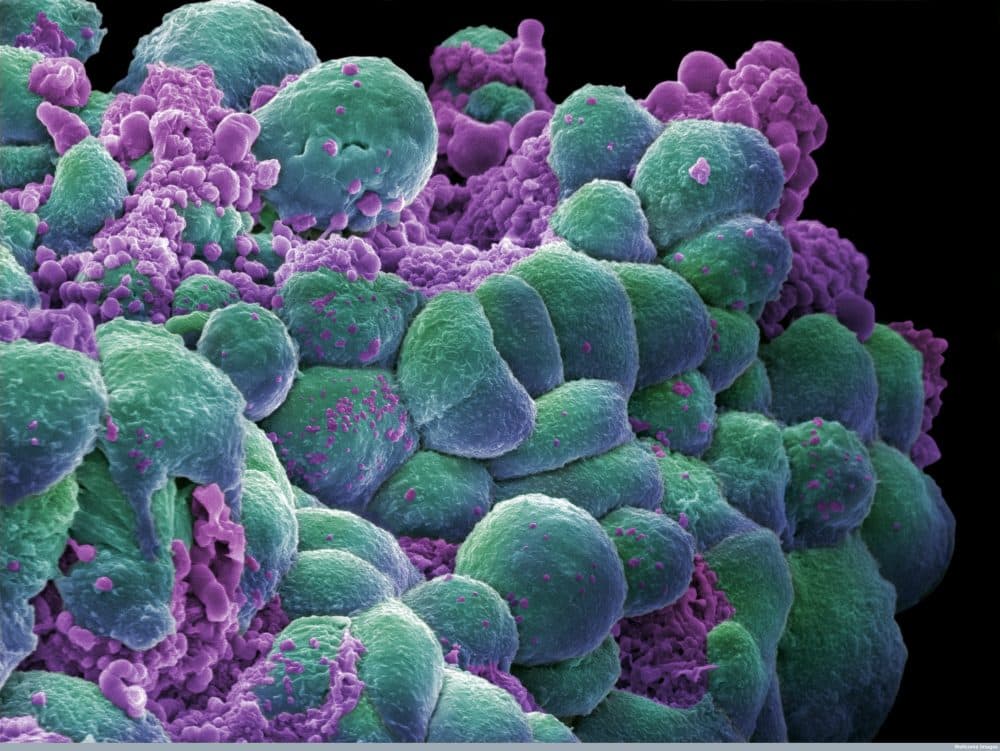Advertisement
Commentary
How Charles Darwin Helped Me Cope With My Cancer

When I was diagnosed with breast cancer in 2011, I was inundated with advice on how to cope with this horrifying turn of events: Meditate. Exercise. Visualize happy outcomes. Get massage and acupuncture. Scream when necessary.
That all helped. Still, during the months I gave up both my breasts and a pad of underarm lymph nodes to surgery, underwent eight rounds of chemotherapy and 33 sessions of radiation, and started tamoxifen, it was impossible to shake the terror that cancer — a foreign, sneaky, malevolent thing — had invaded my body and was lying in wait to wreck more of me.
But gradually, because I had recently finished writing a book about evolution, I realized that I didn’t have cancer, a single thing. Instead, I had a cancer cell population: many things, each of them aimless.
That small difference in thinking made all the difference. I still sometimes suffered limb-freezing bouts of dread. But knowing that each cancer cell was subject to the rules of natural selection helped me accept that neither I nor my doctors had total control of my fate. It helped me understand why I was being treated with radiation and not one but three different chemo drugs and why the newest, targeted therapies aren’t and probably won’t ever be silver bullets. And it also helped me accept that, no matter how much fierceness or tranquility I could muster, my survival depended not on my attitude, but on my cancer cells’ individual characteristics, which I cannot change.
That may all sound like a downer, but the haphazardness of cancer — the haphazardness central to all of evolution — has been weirdly comforting.
***

A cancer cell is not a foreign invader. Our own healthy cells divide to produce fresh copies of themselves and then die. During this copying process, any number of variations in DNA sequence can result. Most are inconsequential.
Sometimes, though, a variation will give a cell the ability to reproduce faster than healthy cells. If, like healthy cells, these offspring cells don’t alert the immune system, they will start to accumulate. If another variation gives one or more of these rapid-reproducing cells the ability to live longer than normal cells, they will accumulate even faster. Eventually, doctors will define this accumulation as cancer.
This is the story of natural selection and evolution for all organisms. As individuals reproduce, variation arises. Each variation lends an individual a different chance of reproducing, depending on the environmental forces it encounters. Any individual that survives and reproduces is adapted to its environment in the Darwinian sense. A breast cancer cell, because it will produce more offspring, is better adapted to its environment than is a healthy breast cell. Sick, but true.
As in all of natural selection and evolution, it's now a numbers game. If none of these accumulating cells have picked up a variation that allows them to move away from the environment to which they are adapted, surgery alone, in a best-case scenario, can reduce this population to zero. If lines of cells stretch away from the huddle making up most of the population, radiation of the surrounding area can kill them off. The surgery and radiation act like a devastating natural disaster hitting the local area. The population goes extinct.
The more time passes before a cancer can be detected, though, and the more rapidly reproducing cells exist, the greater the chances that a variation will arise that allows some of these cells to adapt -- to survive and reproduce — to a different environment. A subpopulation of the original breast cancer cells may pick up variations that allow them to travel in the bloodstream or lymph system and survive and reproduce in the bones, the brain or other organ. That’s metastasis.
* * *
Chemotherapy is designed to prevent metastasis by changing the chemical environments to which cancer cells are adapted. In the early days of chemo, oncologists treated patients with single-drug regimens. A tiny number of patients experienced complete cures. Most patients, though, appeared cured for months or a few years but then fell ill again. And when cancer reappeared, the original chemo drug didn’t beat it back to any helpful extent.
In cases like this, journalists, and even oncologists themselves, often describe the cancer as "developing resistance" to chemo, as “looking for a new way out” or “plotting its next escape.” Language like this, which ignores how evolution works, falsely lends motivation to cancer. Cancer can't will itself to change to increase its survival.
Chemo drugs usually work by disabling some step in cancer cells’ reproduction process. Many cells in a population of cancer cells have a subvariation that makes one step susceptible to a particular drug. But if some cells have a different subvariation, they will be less susceptible.
These less susceptible cells may survive. If only a few less-susceptible cells are left, it may seem like the cancer is gone. They will still reproduce, but their descendants may take long enough to cause trouble for it not to matter: As my oncologist said to me, in the nicest possible way, “We’ll know you’re cured when you die of something else.” But if they do start causing trouble again, the original chemo drug probably won’t kill them, because the same subvariation will likely once again allow them to survive. They didn’t develop resistance. They were resistant all along.
However, a different step in their reproductive process may be susceptible to a different chemo drug. Or maybe they’re susceptible to a treatment such as tamoxifen, which works to essentially starve breast cancer cells. The logic of “combination therapy” becomes clear: Kill as many individuals in the cancer cell population as possible as quickly as possible using as many different ways as possible.
I don’t know whether combination therapy killed all my cancer cells. But a treatment that makes sense according to the natural selection principles that rule all biological systems gives me much better odds than if I had been diagnosed before it was standard practice. I take what I can get.
* * *
I try hard not to think about whether my cancer will metastasize. When I do, I reassure myself that, by then, some new, better treatment may be available. But I also know that the new targeted cancer treatments aren’t the miracle drugs that press reports sometimes portray, even though they have immensely benefited some patients and will certainly benefit many more. That’s because these treatments also work on variations in cancer cells. Oncologists wanting to try a targeted therapy on me would test some of my cancer cells for the vulnerable variation. If they found it, I’d rejoice.
But over the last few years, researchers have found that multiple biopsies from, for example, a single kidney cancer tumor turned up kidney cancer cells with different genetic profiles. Similar results have been found in breast cancer tumors. A targeted therapy may not actually target all the individual cells in a person’s population of cancer cells.
This relatively recent finding would be no surprise to evolutionary biologists. Similar principles may explain why the new immunotherapies also seem to work only for some patients. If a person has any cancer cells with variations that cause a particular immunotherapy to miss them, the cells will survive to reproduce. So I’ve mostly given up projecting myself into a future when I’ll be cured by some new treatment because, cells being cells, there’s no such thing as a sure bet. Instead, I try to float on the idea that I may have already fallen on the right side of the odds.
* * *
I’m still here. I don’t know whether any of my cancer cells have survived. But understanding evolution has let me know a few things for sure, all of them bracing. First, if cancer kills me, it won’t be because it’s out to get me. I won’t have lost a battle to some craftier adversary.
Despite the words many journalists and even doctors use when describing cancer, cancer cells simply don’t have a survival instinct. If they did, they would evolve themselves into a mutually beneficial relationship with my healthy cells. Because if I die of cancer, the cancer cells die with me. Not smart.
And I also know this: This whole experience hasn’t been directed by something or someone to test my combat ability or moral purity. My survival won’t hinge on a personal quality of mine, but on the up-to-date treatment I’ve been privileged to receive. And yet even with this excellent treatment, the results will depend largely on chance; if this cancer does kill me, it won’t be my fault or my doctors.’ Darwin's theory may be an odd comfort, but it's comfort nonetheless.
Leslie Brunetta is the co-author of "Spider Silk: Evolution and 400 Million Years of Spinning, Waiting, Snagging, and Mating." She is a freelance writer in Cambridge whose articles have appeared in MIT Technology Review, the Sewanee Review, on NPR and elsewhere.